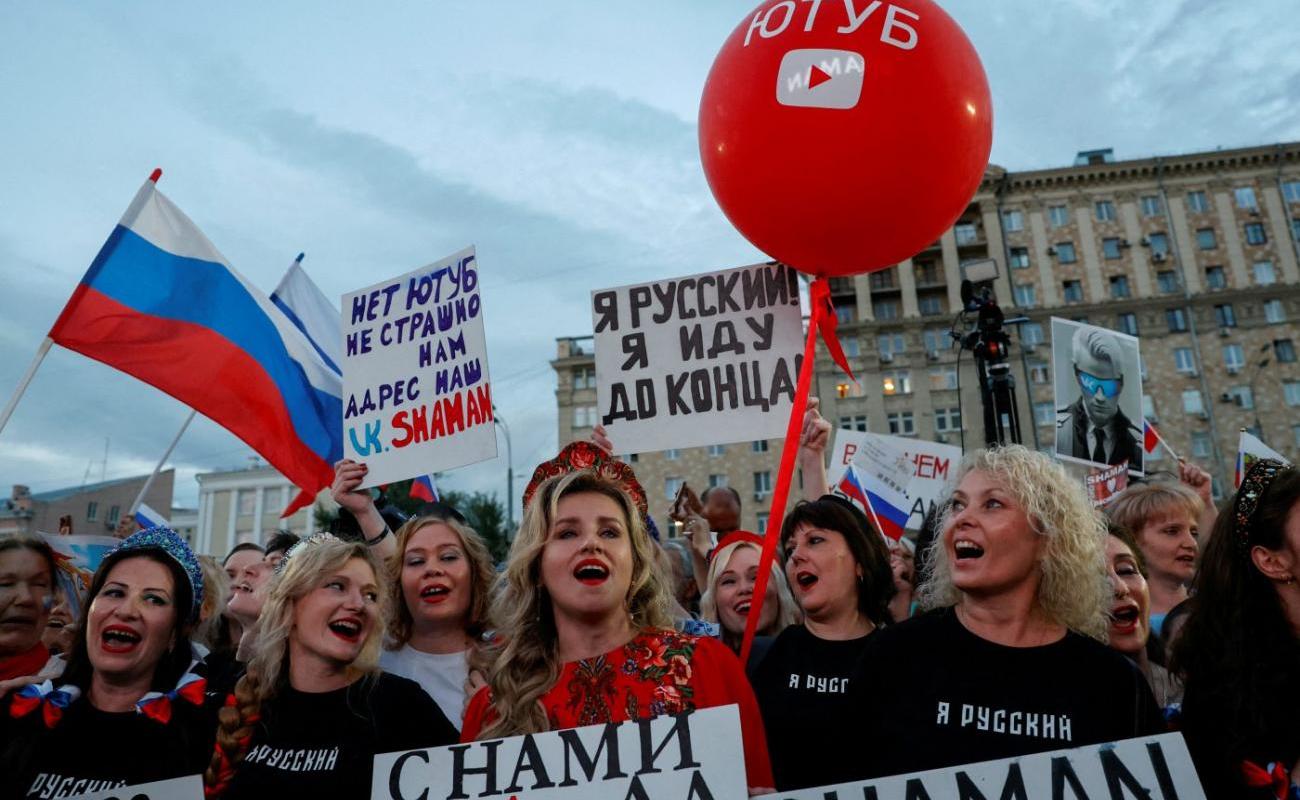Russia’s Window on the World Is Now Closing

Many Russians were keen to watch the Olympics closing ceremony in Paris on August 11, regardless of the war with Ukraine and the new Cold War with the West proclaimed by the Kremlin. While many Russian athletes were banned from Paris, the global event was a real draw, only heightened by a national affection for the French capital dating back to the 19th century.
Given the reality of sanctions, however, the Russian audience had no chance to watch Tom Cruise descending from the top of the Stade de France to take the Olympic flag from star gymnast Simone Biles. So most turned to YouTube, like 70-year-old Muscovite Elena, who watched the event on her iPad. Like many (up to 96 million Russians use the site) she managed to see most of the ceremony on YouTube, which made her happy even if she watched it with delay.
Almost immediately afterwards, she and millions of others lost access, as the Kremlin moved to block YouTube across Russia, and Elena lacks technical skills to have a working VPN on her device. The decision has been flagged for years; Putin simply cannot allow contradictory and widely available sources of information in his increasingly despotic state.
In the early 2000s, the Kremlin saw television as a weapon of mass consumption and kept it tightly under control since it was nationally the most popular media and entertainment platform.
That changed in spring 2017, when protests hit many Russian cities, at least in part sparked by a video about the corruption of the Russian prime minister Dmitri Medvedev, produced by Alexey Navalny’s team. That was posted on YouTube where it was watched more than 20 million times.
The new generation of protesters, including teenagers, took to the streets. At that point, Russian-speaking YouTube went political: well-known bloggers started producing heavily political content, and opposition politicians became the most popular YouTubers.
Ever since, Russian television’s influence has been waning: in 2019, the very first time in Russian history, online advertisement revenue overtook that on television: TV ad spending increased by 9% to 187bn rubles ($2.1bn), and on the Internet by 22% to 203bn rubles.
Finally, even mainstream journalists migrated to YouTube, a drive acceleratedby Covid 19 lockdowns, when the demand for Russian-speaking content on YouTube skyrocketed.
By the time the pandemic struck, the Kremlin had been working for two years on a new Russian internet censorship system to deal with the threat posed by YouTube.
This consisted of several elements.
The first was to provide Russian Internet service providers with special equipment giving censors the means to suppress and redirect traffic across the country from a central point in Moscow, all supplied and paid for by the state. That part of the plan became known as The Sovereign Internet.
The second element was to increase pressure on global platforms — and included the introduction of huge fines, the intimidation of employees, direct pressure, and threats – all of which was applied to YouTube. This included multi-billion ruble fines.
The final feature was termed import substitution and sought to induce Russian customers to move to Russian-made analogs for global services.
When the war started, some elements were ready — for instance, Sovereign Internet technology — but some were not. As a result, the Kremlin immediately and successfully blocked Twitter, Instagram, and Facebook, but didn’t block YouTube since the Russian substitute was not considered fully operational.
That has meant that since the full-scale invasion of February 2022, YouTube has been the main battlefield for independent Russian journalists and the opposition, which moved large amounts of activity to the site, even as most other forms of protest were harshly suppressed.
And all those years, YouTube retained its massive cultural role for the Russians. Even during the war, over 96 million Russians out of 146 million watched cartoons, entertainment shows, educational content, news, and politics on YouTube every month.
Paradoxically, the more Western sanctions hit the Russians, the greater YouTube’s cultural significance — the Olympic Games being one of many examples.
In July, the Kremlin finally felt ready to act. Censors started suppressing YouTube traffic across the country, though with varying success. Alexander Khinshtein, the Duma member traditionally rolled out to comment on the Kremlin Internet policy, merely explained that YouTube had been “punished” for “violations” of Russian legislation.
The YouTube offensive started before August’s Kursk incursion and is a strategic rather than a tactical move to curtail information flow. Besides, other social platforms like Telegram and TikTok are filled with news about theKursk region — the censors don’t yet block traffic on those platforms.
The Kremlin knew there was little point in seeking to harass Google, YouTube’s owners, into cooperation. Notably though, the censors also blocked Signal — the most secure, and trusted messenger system, which is widely used by the Russian opposition.
Russian censors are taking a risk. YouTube is now a significant cultural phenomenon. The attack was met with a backlash from internet users: subscribers of more than 135 regional telecom operators began canceling their home internet access contracts due to problems with YouTube and other Google services (the censors initially suppressed YouTube’s traffic through landlines, while mobile networks were left to provide unrestricted access to the service, for a while longer.)
For those clients, YouTube has become the main reason to be online.
The reaction of the near-100 million Russians who used to live with YouTube remains to be seen.
Andrei Soldatov and Irina Borogan are Non-resident Senior Fellows with the Center for European Policy Analysis (CEPA.) They are Russian investigative journalists, and co-founders of Agentura.ru, a watchdog of Russian secret service activities.
Europe’s Edge is CEPA’s online journal covering critical topics on the foreign policy docket across Europe and North America. All opinions are those of the author and do not necessarily represent the position or views of the institutions they represent or the Center for European Policy Analysis.
